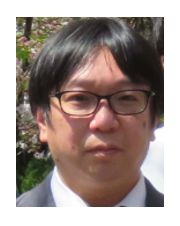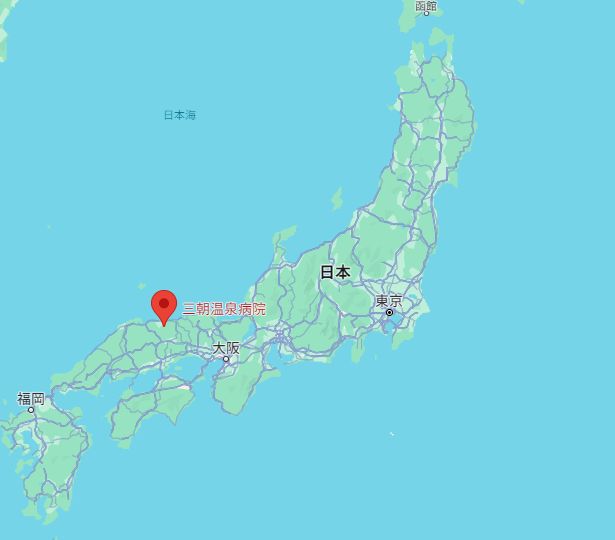radon : a beneficial effect on health.
Radon air bath effect at Misasa hot spring
2023/11/28 at Okayama, Japan
The lecture, by Associate Professor Kataoka, Faculty of Health Sciences, Okayama University, on the effects of radon hot springs and the effects of radiation on the human body, was an introduction to research related to radon hot spring therapy at the former Misasa Medical Center, Okayama University Hospital.


Radon : Atomic Half-life is just under 4 days. In Japan, the concentration is normally around 17 Bq/m3 of atmosphere, and in the Misasa radon high concentration hot air bathroom (formerly Misasa Medical Center) it is around 100 times that. When inhaled, it is effective in relieving pain. Experiments on mice showed that the effect is due to an increase in antioxidants in the body due to exposure to alpha rays (helium nuclei) emitted by radon.
The mine shafts of the Badgastein gold mine in Austria, which have 40,000 becquerels, 20 times as much as the Misasa hot springs, are famous for curing illnesses and improving health for miners, and now they enter the mine shafts to breathe in the radon in the air for medical purposes. Many people also take radon baths.
Human aging is mainly caused by active oxygen generated in the body's metabolism of oxygen taken in through breathing, and humans have the highest level of antioxidation in the animal kingdom by creating antioxidants to detoxify it, and this is the highest level in humankind. The cause of lifespan. Extremely small doses of radiation have the effect of increasing its production.
Common sense used to think that radiation is harmful no matter how small the amount, but it turns out that in moderate amounts it can have a beneficial effect on health.
*Respiration of approximately 40,000 Bq/m3 of radon in Austrian mine shafts is believed to be beneficial to health.
Data
Environment International
The scientific development of a former gold mine near Badgastein, Austria, to the therapeutic facility “Thermal Gallery”
https://www.sciencedirect.com/science/article/abs/pii/016041209390271I
Abstract
The air in the Thermal Gallery (22 000 m3 has a mean radon content of about 100 kBq/L, temperatures of up to 41 °C, and relative humidities of up to 99%.
Due to these unusual conditions and to the first observations of health effects (curing of colds and rheumatic diseases) on mine workers during World War II, the idea was born in 1946 to use that abandoned mine as a big radon inhalation room for therapeutical purposes.
This paper describes the historical development of the vast and detailed investigations, the facilities available at that time, of the physical mine properties, and the biophysical and basic medical effects after inhalation of the mine's atmosphere.
The physical investigations included the variation of temperature and humidity with artificial and natural ventilation and numerous point measurements of the atmospheric radon content, which continously changed from site to site and day to day. These measurements showed that randon is supplied from the fissures in the rocks in response to changes in barometric pressure. Furthermore, the relation of the amounts of radon to its decay products were determined for the various sites.
The biophysical investigations covered the solubility of radon in blood at high body temperatures (hyperthermia) and the determination of the dose in the various tissues and organs in animals and humans after inhalation of radon and its daughters.
Individual assessments of personal doses according to the dose and dose distribution studies enabled a detailed investigation of the nonlinear dose dependence of radiation-induced structural chromosome aberrations in the peripheral blood lymphocytes of workers entering the mine and of persons living and working in the spa house in front of the mine and in the area of Badgastein.
The basic medical information was obtained from voluntary collaborators and patients, brought into the mine for experimental purposes. They included hematological and cardiovascular tests, observations of mobility enhancements, and personally recorded pain reliefs. Due to these studies, the commercial therapeutic use could be started in 1952. Today, more than 500 patients per day can be treated.
gasteinermuseum
Treasures of the Radhausberg
From Gold to the thermal Gallery.

The Radhausberg, that remarkable mountain to the south of Bad Gastein, is not only wrapped in legends, but also conceals at least two remarkable treasures:
Firstly, it was Gold of the Tauern that was mined in pre Roman times. The zenith or golden age of Gold-mining in the region of Gastein and Rauris was reached in the 16th century. During this period about 2.800 kilograms of silver and 800 kilograms of gold were mined annually. It was through the gold in the Radhausberg that many of Gasteins’ entrepreneurs, like Weitmoser and Strasser, acquired their wealth. It was also a very important source of income for the archbishop of Salzburg. In the following centuries production gradually decreased and also the private “Union Radhausberg”, which tried to revitalize gold mining, was not successful.
Eventually the German Preussag bought the mining-rights in the 1940s. With the help of a new gallery at the foot of the Radhausberg they hoped to meet an auriferous lode. They were not successful but instead found another outstanding treasure. They found rock with a high concentration of radon in the air and temperatures of 37 to 41.5 degrees and relatively high humidity of between 70% to 100%. In the Böckstein Thermal Gallery this remedy is used for therapeutic treatment today and astonishing results have been achieved in the treatment of rheumatic complaints.
